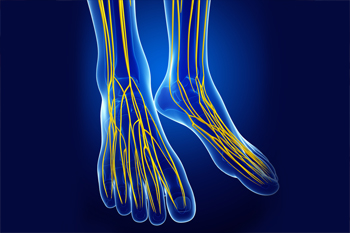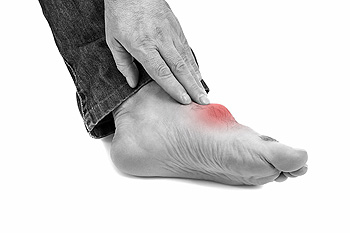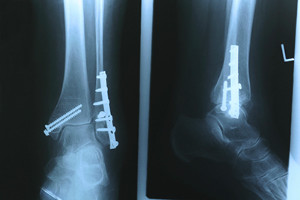Items filtered by date: April 2021
What Are the Causes and Risk Factors of Developing Gout?
Purine, a chemical compound, is naturally present in the body and in foods including certain meats and seafood, as well as alcohol. When purine is broken down, uric acid is produced. If the body cannot properly flush uric acid out, it may crystalize in the joints—causing inflammation, pain, stiffness and even deformity in extreme cases. This condition, known as gout, is a form of arthritis which most commonly occurs in the metatarsophalangeal joint connecting the foot with the big toe. Men are more likely to develop gout, as well as people with a family history of gout, or those who are over 50 years old. Other risk factors can include obesity, high blood pressure, abnormal kidney functions, and drug or alcohol abuse. In rare cases, children with certain genetic disorders that cause an excess of uric acid can develop gout. If you are in any of these high-risk groups and are experiencing pain or inflammation in any ankle or foot joint, contact a podiatrist who can examine you and may perform tests to analyze the fluid around the joint to see if uric acid crystals are present.
Gout is a painful condition that can be treated. If you are seeking treatment, contact Leonora Fihman, DPM from California. Our doctor will treat your foot and ankle needs.
What Is Gout?
Gout is a form of arthritis that is characterized by sudden, severe attacks of pain, redness, and tenderness in the joints. The condition usually affects the joint at the base of the big toe. A gout attack can occur at any random time, such as the middle of the night while you are asleep.
Symptoms
- Intense Joint Pain - Usually around the large joint of your big toe, and it most severe within the first four to twelve hours
- Lingering Discomfort - Joint discomfort may last from a few days to a few weeks
- Inflammation and Redness -Affected joints may become swollen, tender, warm and red
- Limited Range of Motion - May experience a decrease in joint mobility
Risk Factors
- Genetics - If family members have gout, you’re more likely to have it
- Medications - Diuretic medications can raise uric acid levels
- Gender/Age - Gout is more common in men until the age of 60. It is believed that estrogen protects women until that point
- Diet - Eating red meat and shellfish increases your risk
- Alcohol - Having more than two alcoholic drinks per day increases your risk
- Obesity - Obese people are at a higher risk for gout
Prior to visiting your podiatrist to receive treatment for gout, there are a few things you should do beforehand. If you have gout you should write down your symptoms--including when they started and how often you experience them, important medical information you may have, and any questions you may have. Writing down these three things will help your podiatrist in assessing your specific situation so that he or she may provide the best route of treatment for you.
If you have any questions, please feel free to contact our offices located in Encino and Brentwood, Los Angeles, CA . We offer the newest diagnostic and treatment technologies for all your foot care needs.
Diagnosing Athlete's Foot
The term athlete’s foot refers to a fungal infection of the skin of the feet. This can be highly unpleasant and cause symptoms such as dry, flaky, red, scaly, and itchy skin on the soles of the feet and between the toes. The skin may also sting, burn, crack, or blister. Athlete’s foot can be diagnosed by a podiatrist through a physical examination. The doctor may also perform the potassium hydroxide (KOH) test. This simple test involves taking a small sample of skin from your foot and placing it in a potassium hydroxide (KOH) solution, then viewing the results under a microscope. The KOH solution destroys human cells, leaving behind only the fungal cells. If fungal cells are present, this confirms the diagnosis of athlete’s foot. If you suspect you may have athlete’s foot, please seek the care of a podiatrist.
Athlete’s foot is an inconvenient condition that can be easily reduced with the proper treatment. If you have any concerns about your feet and ankles, contact Leonora Fihman, DPM from California. Our doctor will treat your foot and ankle needs.
Athlete’s Foot: The Sole Story
Athlete's foot, also known as tinea pedis, can be an extremely contagious foot infection. It is commonly contracted in public changing areas and bathrooms, dormitory style living quarters, around locker rooms and public swimming pools, or anywhere your feet often come into contact with other people.
Solutions to Combat Athlete’s Foot
- Hydrate your feet by using lotion
- Exfoliate
- Buff off nails
- Use of anti-fungal products
- Examine your feet and visit your doctor if any suspicious blisters or cuts develop
Athlete’s foot can cause many irritating symptoms such as dry and flaking skin, itching, and redness. Some more severe symptoms can include bleeding and cracked skin, intense itching and burning, and even pain when walking. In the worst cases, Athlete’s foot can cause blistering as well. Speak to your podiatrist for a better understanding of the different causes of Athlete’s foot, as well as help in determining which treatment options are best for you.
If you have any questions please feel free to contact our offices located in Encino and Brentwood, Los Angeles, CA . We offer the newest diagnostic and treatment technologies for all your foot and ankle needs.
Tarsal Tunnel Syndrome and Nerve Damage
 Patients who have consistent foot pain are aware of the discomfort it may cause in daily life. The foot condition that is referred to as tarsal tunnel syndrome can cause severe pain and discomfort, and is caused by nerve damage. The tarsal tunnel is found inside the ankle, and the nerve that lies in this area may become damaged from repetitive motions, bone spurs, or flat feet. When specific stretches are frequently performed, mild relief may be found. If you have ankle pain, it is suggested that you schedule a consultation with a podiatrist who can properly diagnose and treat tarsal tunnel syndrome.
Patients who have consistent foot pain are aware of the discomfort it may cause in daily life. The foot condition that is referred to as tarsal tunnel syndrome can cause severe pain and discomfort, and is caused by nerve damage. The tarsal tunnel is found inside the ankle, and the nerve that lies in this area may become damaged from repetitive motions, bone spurs, or flat feet. When specific stretches are frequently performed, mild relief may be found. If you have ankle pain, it is suggested that you schedule a consultation with a podiatrist who can properly diagnose and treat tarsal tunnel syndrome.
Tarsal tunnel syndrome can be very uncomfortable to live with. If you are experiencing tarsal tunnel syndrome, contact Leonora Fihman, DPM of California. Our doctor can provide the care you need to keep you pain-free and on your feet.
Tarsal Tunnel Syndrome
Tarsal tunnel syndrome, which can also be called tibial nerve dysfunction, is an uncommon condition of misfiring peripheral nerves in the foot. The tibial nerve is the peripheral nerve in the leg responsible for sensation and movement of the foot and calf muscles. In tarsal tunnel syndrome, the tibial nerve is damaged, causing problems with movement and feeling in the foot of the affected leg.
Common Cause of Tarsal Tunnel Syndrome
- Involves pressure or an injury, direct pressure on the tibial nerve for an extended period of time, sometimes caused by other body structures close by or near the knee.
- Diseases that damage nerves, including diabetes, may cause tarsal tunnel syndrome.
- At times, tarsal tunnel syndrome can appear without an obvious cause in some cases.
The Effects of Tarsal Tunnel Syndrome
- Different sensations, an afflicted person may experience pain, tingling, burning or other unusual sensations in the foot of the affected leg.
- The foot muscles, toes and ankle become weaker, and curling your toes or flexing your foot can become difficult.
- If condition worsens, infections and ulcers may develop on the foot that is experiencing the syndrome.
A physical exam of the leg can help identify the presence of tarsal tunnel syndrome. Medical tests, such as a nerve biopsy, are also used to diagnose the condition. Patients may receive physical therapy and prescriptive medication. In extreme cases, some may require surgery.
If you have any questions please feel free to contact our offices located in Encino and Brentwood, Los Angeles, CA . We offer the newest diagnostic and treatment technologies for all your foot and ankle needs.
Common Types of Fractures on the Outside of the Foot
The fifth metatarsal bone—the long bone connected to the little toe on the outside of the foot—is prone to breaks, with the two most common being Avulsion fractures and Jones fractures. Avulsion fractures usually occur from an injury that causes tendons or ligaments to pull a portion of the bone away from itself. A Jones fracture is less common, occurs either over time or suddenly, is harder to treat, and takes longer to heal due to less blood flow to the area. People suffering from either type of fifth metatarsal fracture can experience bruising or discomfort along the outside of the foot including tenderness, swelling, and pain. Some may even have difficulty walking. A podiatrist can properly diagnose the type of break and use several types of therapies and procedures to facilitate healing.
A broken foot requires immediate medical attention and treatment. If you need your feet checked, contact Leonora Fihman, DPM from California. Our doctor can provide the care you need to keep you pain-free and on your feet.
Broken Foot Causes, Symptoms, and Treatment
A broken foot is caused by one of the bones in the foot typically breaking when bended, crushed, or stretched beyond its natural capabilities. Usually the location of the fracture indicates how the break occurred, whether it was through an object, fall, or any other type of injury.
Common Symptoms of Broken Feet:
- Bruising
- Pain
- Redness
- Swelling
- Blue in color
- Numbness
- Cold
- Misshapen
- Cuts
- Deformities
Those that suspect they have a broken foot shoot seek urgent medical attention where a medical professional could diagnose the severity.
Treatment for broken bones varies depending on the cause, severity and location. Some will require the use of splints, casts or crutches while others could even involve surgery to repair the broken bones. Personal care includes the use of ice and keeping the foot stabilized and elevated.
If you have any questions please feel free to contact our offices located in Encino and Brentwood, Los Angeles, CA . We offer the newest diagnostic and treatment technologies for all your foot and ankle needs.




